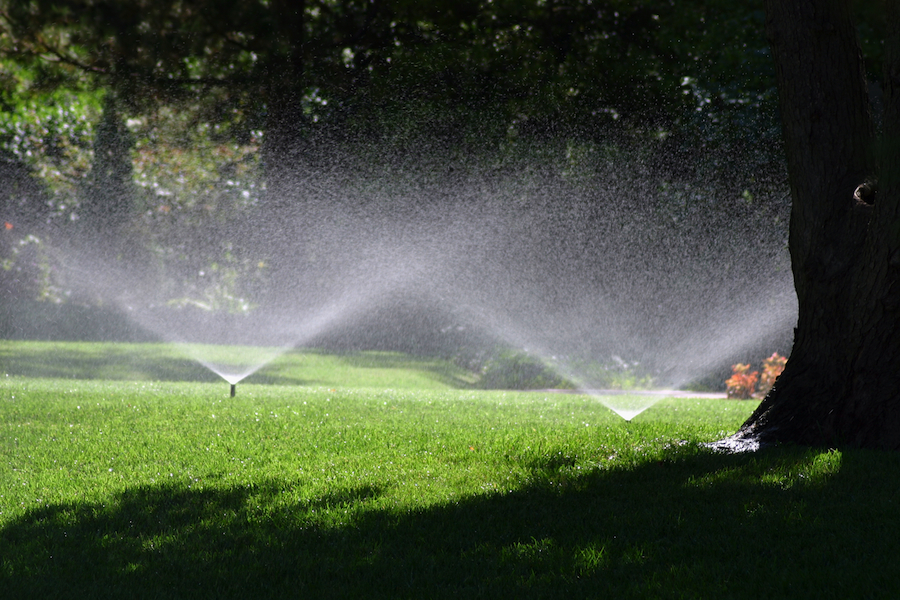"Well, because we have always done it that way" is a logic commonly applied to the application of water on our landscapes—but one that we can no longer apply given the changing demand of our marketplace.
With ongoing persistent droughts, legislation, and local restrictions on the use of landscape irrigation, the Green Industry is facing some serious challenges. No longer will it be acceptable to spray potable water inefficiently all over the landscape until water runs down the gutter. The efficient application of water requires a holistic "best management practice" approach to use water wisely and minimize waste.
Here are several great products and considerations to maximize the water saving benefits of your next new or upgraded irrigation installation:
1. Smart Irrigation Controllers
With more variety and affordable options than ever before, smart controllers utilize either evapotranspiration (ET) or soil moisture sensing data inputs to run irrigation cycles only when needed. The latest advancements include WiFi controllers that access nearby weather station data to automaticaly manage irrigation. Initial setup and programming are completed with easy-to-understand icons for zone specific information about plant material, emission device, soil type, slope and sun exposure from an iPhone, iPad or Android device.
2. Water Conservation or Water Rationing?
Many drought stricken markets have now assigned specific days of the week for landscape irrigation. Unfortunately, Tuesday may not be the best day to irrigate, especially if it rained Sunday and Monday. Most of these restrictions also limit the use of sprinkler systems within 48 hours of a rain event, and citations can be issued for excess runoff.
Soil moisture sensors can be an excellent way to manage the irrigation controller in these situations by establishing a moisture threshold to prevent overwatering with excessive runoff.
3. Use "smarter" sprinklers!
Smart controllers with sensors can be incredibly effective in managing irrigation more efficiently. However, it is equally important that the sprinkler emission device also be as smart as possible to maximize system efficiency and minimize water waste. Pressure regulated sprinkler and rotary heads are able to hit the nozzle "sweet spot" and reduce waste due to overspray and misting. The addition of built-in check valves can prevent low head drainage after the zone shuts down. High efficiency nozzles are extremely effective on new installations and can be a great water-saving choice on system renovations. Lastly, rotating nozzles are an excellent solution due to the fact that larger water droplets stand up against wind and evaporation. Their lower application rate also provides a lower precipitation rate for better soil absorption and less runoff.
 4. Does drip irrigation really save water?
4. Does drip irrigation really save water?
Almost every irrigation system has several zones that are better managed with inline dripline from shrub and ground-cover beds, to narrow landscape areas. Even turfgrass can benefit from sub-surface drip irrigation. In sparsely planted landscapes, point source emitters that apply water directly to the plant is the only acceptable method.
Within the industry, it is generally accepted that drip irrigation is over 90 percent efficient. This is because drip applies water directly to the root zone and is not affected by wind and evaporation. For this reason, when compared to above ground sprays and rotors, drip can save 30 to 50 percent by applying water more efficiently.
To learn more about using drip irrigation to water more efficiently, read our Why use drip irrigation? blog.
Conservation and efficiency may not be enough in the future to solve critical potable water shortages. Alternate water sources will be required to irrigate smaller native landscapes with less turfgrass area. On-site water from harvested rainwater and recycled grey water will increasingly become a way to irrigate, in a more limited and regulated way.
Landscape irrigation will become increasingly scrutinized with even more restrictions and code enforcement. As industry professionals, we must understand state and local restrictions so we can comply with technology, installation solutions and best management practices and take advantage of local rebates. We can't keep doing it the way we always have.








